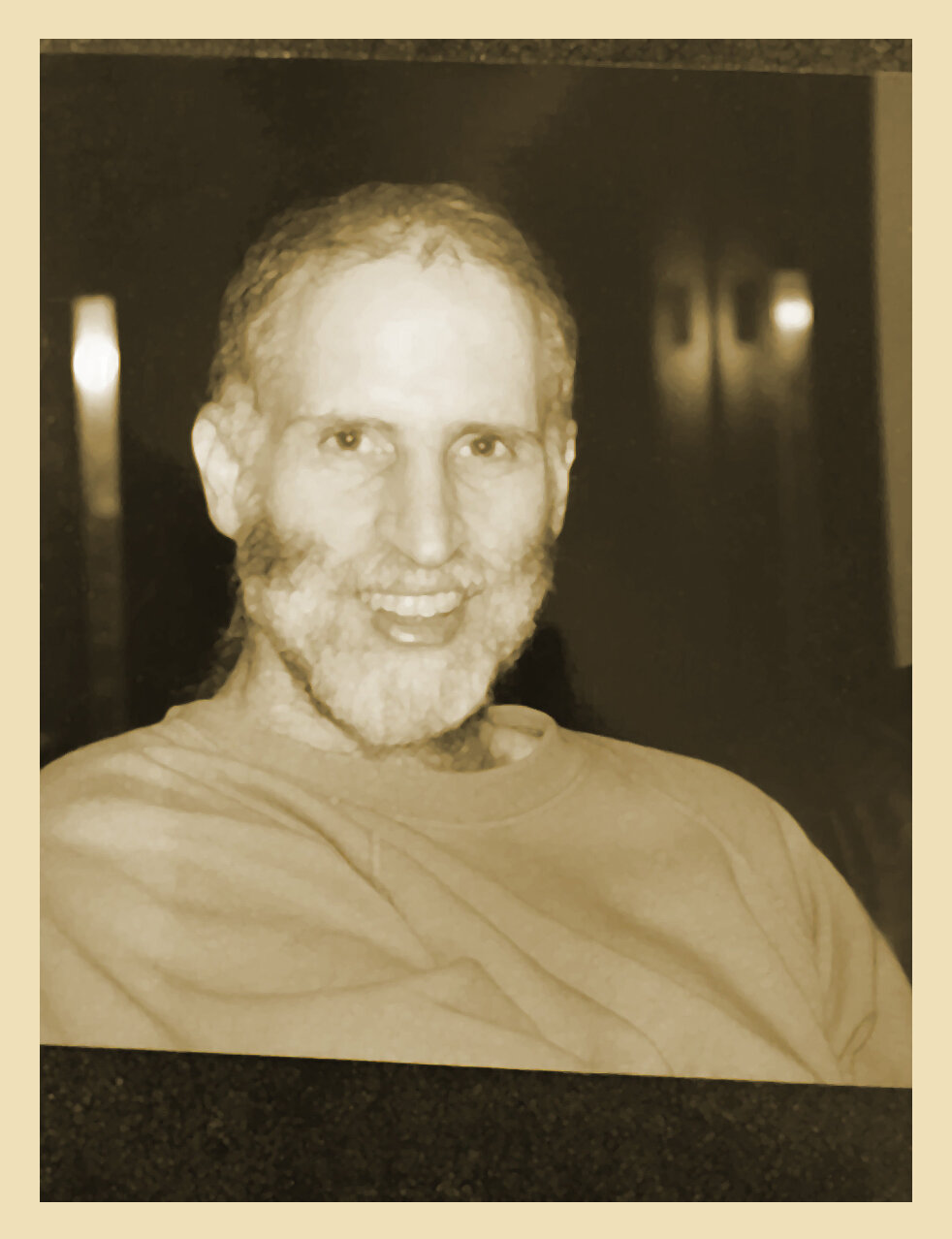Born on August 17, 1946, Peter Strickman grew up in Fall River, MA, where he was greatly admired for his brilliance and many creative talents. He skipped his senior year of high school and went directly to Marlboro College in Vermont and studied painting with Frank Stout.
Peter was a well-informed scholar of many fields of study. He had been a scientist, a mathematician and a musician. He was a poet and a wonderful story teller. He studied many religions and cultures.
After graduating from college with highest honors, Peter embarked on making a living as a painter. His work was shown in many galleries in the northeast; he had a solo show at the Newport RI Art Association (now the Newport Art Museum). He painted prolifically and sold many paintings which are in homes across the U.S.
As Peter evolved as a painter and as a human being, so did his style and subject matter. He experimented. He explored. He tried new things. He had a rich inner life, and his work expresses the diversity within the human spirit.
Diagnosed with schizophrenia when he was in his early 20’s, his ambition gradually waned, and he turned primarily to a more contemplative life. Peter stopped painting in oil when he was 30; ink painting became his primary focus. Ultimately he stopped painting entirely. He continued to write many poems, short stories, spiritual biographies, but the painting stopped.
Peter Strickman died on January 26, 2017 at age 70, after four weeks of persistent pneumonia. Many years prior, he had given all the remaining hundreds of his paintings, drawings, ink scrolls and sketch books to me, his sister, Bonnie Strickman.
This website is only a sampling of the Peter Strickman Collection, grouped as Landscapes, Objects, People, Abstractions, and Ink Paintings. Peter Strickman was a unique, kind, and multi-talented person.
In His Own Words
When I was in college, my wonderful painting teacher, Frank Stout, and I were talking. He was prophetic; he was the first really spiritual person I ever met. And he was the first one to introduce me deeply to Zen Buddhism and the Chinese ink painting tradition which later became my primary medium after my retirement. He said in a real prophetic way, “You’re going to leave the world when you’re in your thirties, please, leave us something behind to remember you by and to bless us with.”
So all those paintings I did in my teens and twenties are the fulfillment of his request, but when I turned thirty, I turned deeply toward religion and left painting and color permanently behind.
I’d always preferred the Asian ink painting traditions, especially the Chinese paintings… When I started painting again, it was in the ink painting tradition, not for sale, and solely for spiritual pleasure. I did that for about fifteen years before I went into the hospital for a mental illness relapse and they put me on a very fine medication that prevented me from doing all my painting work – just had no impetus and practically no ability anymore to paint.
Now I live half a block from where I first discovered Zen Buddhism 50 years ago. My brother had an apartment on Myrtle Street in Boston, and when I was 12, I hitchhiked from home, 50 miles on the highway from Fall River to Boston, to visit him… He had a wonderful straw rug on the floor. Sitting on the rug near his chair was a paperback book, D.T. Suzuki’s “Introduction to Zen Buddhism,” with a splendid ink painting on the cover – from China – by Yintolo. I saw the painting and was deeply intrigued by the title. The painting inspired a zeal in me, especially when I saw that my brother had copied it onto a window shade in an impromptu Zen scroll. I was filled with zealous envy and had my first introduction to Zen Buddhism.
All through my twenties I studied… wanted to thoroughly absorb the Zen tradition so that I could paint those beautiful Zen ink paintings. In my mid-thirties I began to produce them prolifically, and not long after that I moved in to my new apartment where I have been for 25 years, half a block away from where I first discovered Zen Buddhism… and where I produced the great majority of my work. I always preferred the Eastern tradition far more than the Western tradition. I became an oil painter only because that was what was available to me. All the oils were before I was 30.
Edited excerpts from a recorded lunch with Bonnie Strickman, his sister. Phoenecia Restaurant, Boston, MA, July 4, 2009


